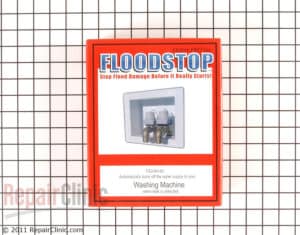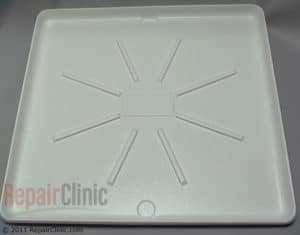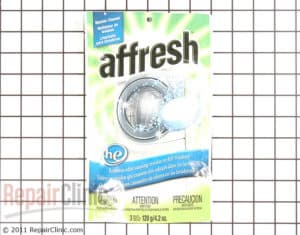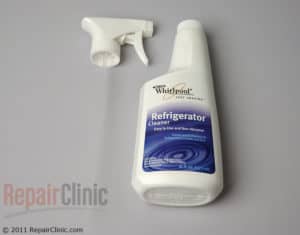In most homes, the washing machine is often the hardest working appliance and yet it requires only minimal maintenance. There are, however, a few easy, important washing machine servicing steps to keep it fresh, clean and problem free.
Be sure to study your owner’s manual for specific instructions for your model.
First check out our popular How-it-Works video information for maintenance tips and solutions to common problems associated with washing machines.
Top-load washing machine
Front-load washing machine
Inspect the hoses
A couple of times monthly, check your washing machine’s water hoses for signs of wear or weakness. If you discover any cracks or blistering, replace the hose. Any damage could cause a leak or burst – and extremely expensive flood damage in your home.
Most manufacturers recommend replacing the hoses every five years.
Repair Clinic stocks many types of hoses designed specifically for your washing machine model.
For more peace of mind, use high-quality, stainless steel washing machine hoses.
Prevent flood damage
In the event that your washing machine’s fill hoses burst or water level switch malfunctions, you’ll have instant water damage in the room.
In our homes, we use these two products to prevent this:
Water Shutoff System
This water shutoff system prevents water damage by automatically shutting off the water flow when a malfunction is detected. Installation can be completed in five minutes. No special tools are needed.
Washing Machine Overflow Pan
This popular plastic pan fits beneath a washing machine and will protect a floor from water damage due to overflow and leakage. It has a fitting to accommodate drain line attachment. Inside dimensions: 27″ x 30″ x 2″
Don’t overload it
Follow the owner’s manual’s instructions for appropriate loading sizes. Over-sized loads will throw the machine off balance and that will lead to problems.
Keep it level
It’s abnormal for washing machines to vibrate the floor and walls of your laundry room. If your washing machine is not exactly level, with all four legs on the floor, it may rock back and forth and vibrate strongly.
It’s best to keep the machine as close to the floor as possible. The closer the machine sits to the floor, the less it will vibrate.
The front legs are adjustable with a lock-nut. Position the legs at the desired height and tighten the lock nut against the body of the machine so that the legs cannot rotate. Some models also have adjustable legs in the rear, too. Follow the same process for adjusting those.
It is more common for machines to have self-adjusting rear legs. Ask someone to assist you with this. Tilt the machine forward on its front legs so that the rear legs are three to four inches from the floor. When you set the machine back down to rest all on all four legs, the legs should adjust automatically. If you find that they are not level, tilt the machine forward again and tap on the rear legs with the handle of a hammer to loosen them.
Easy on the soap
Regardless of what’s recommended on detergent packaging, follow your owner’s manual for the manufacturer’s recommended amount of detergent.
Clean the inside once monthly
It’s common for detergent residue to build up inside of washing machine tubs. We use this cleaner once per month to keep our high-efficiency washing machines free of odor-causing residue.
Clean out the fabric softener dispenser
Gooey in nature, liquid fabric softener is known to gum up along fabric softener dispensers. Use a damp rag and HOT water to clean out this periodically.
Polish the outside
Spilled detergent, stain remover and fabric softener dries to a sticky mess. This all-purpose cleaner and a rag will make cleaning easy.
Touch up gashes and scrapes with paint
Prevent rusting by taking care of gashes and scrapes right away using touch-up paint.




Comments are closed.